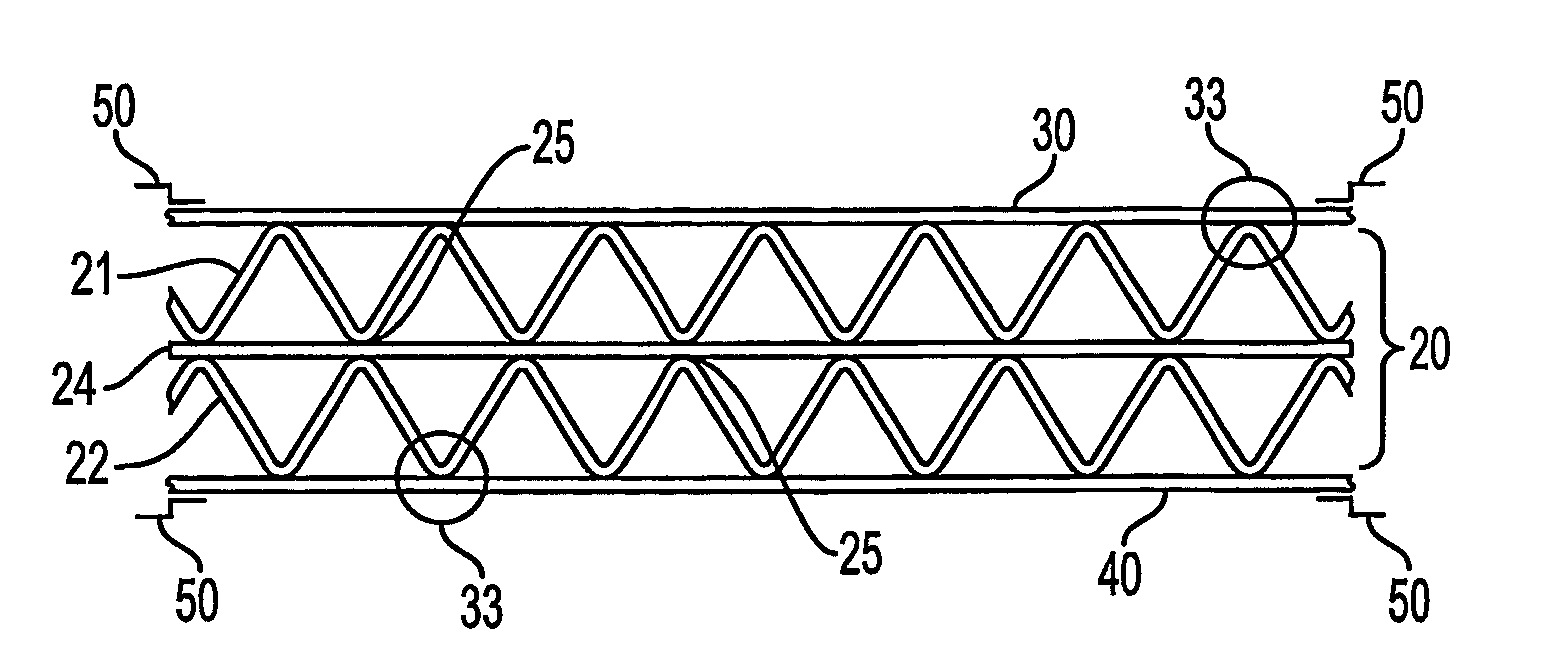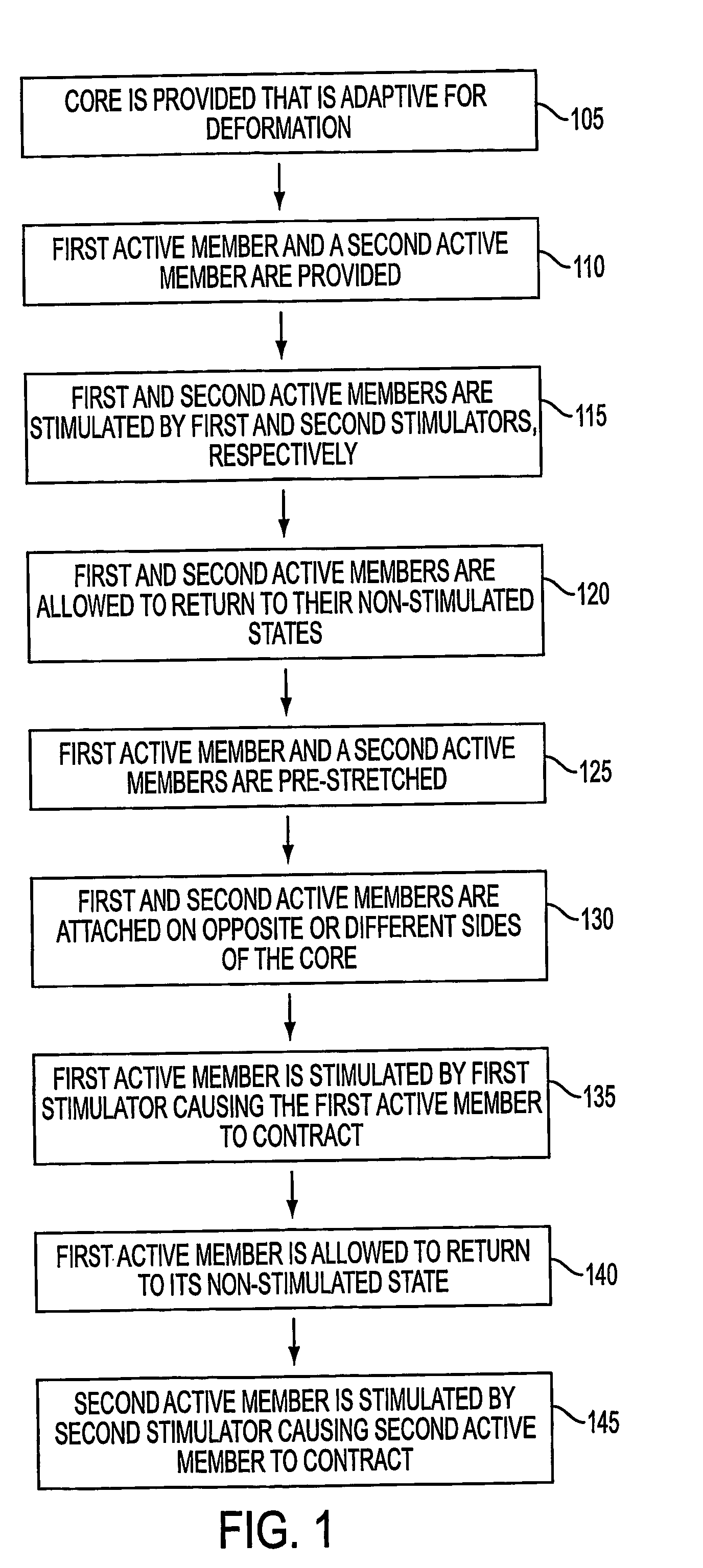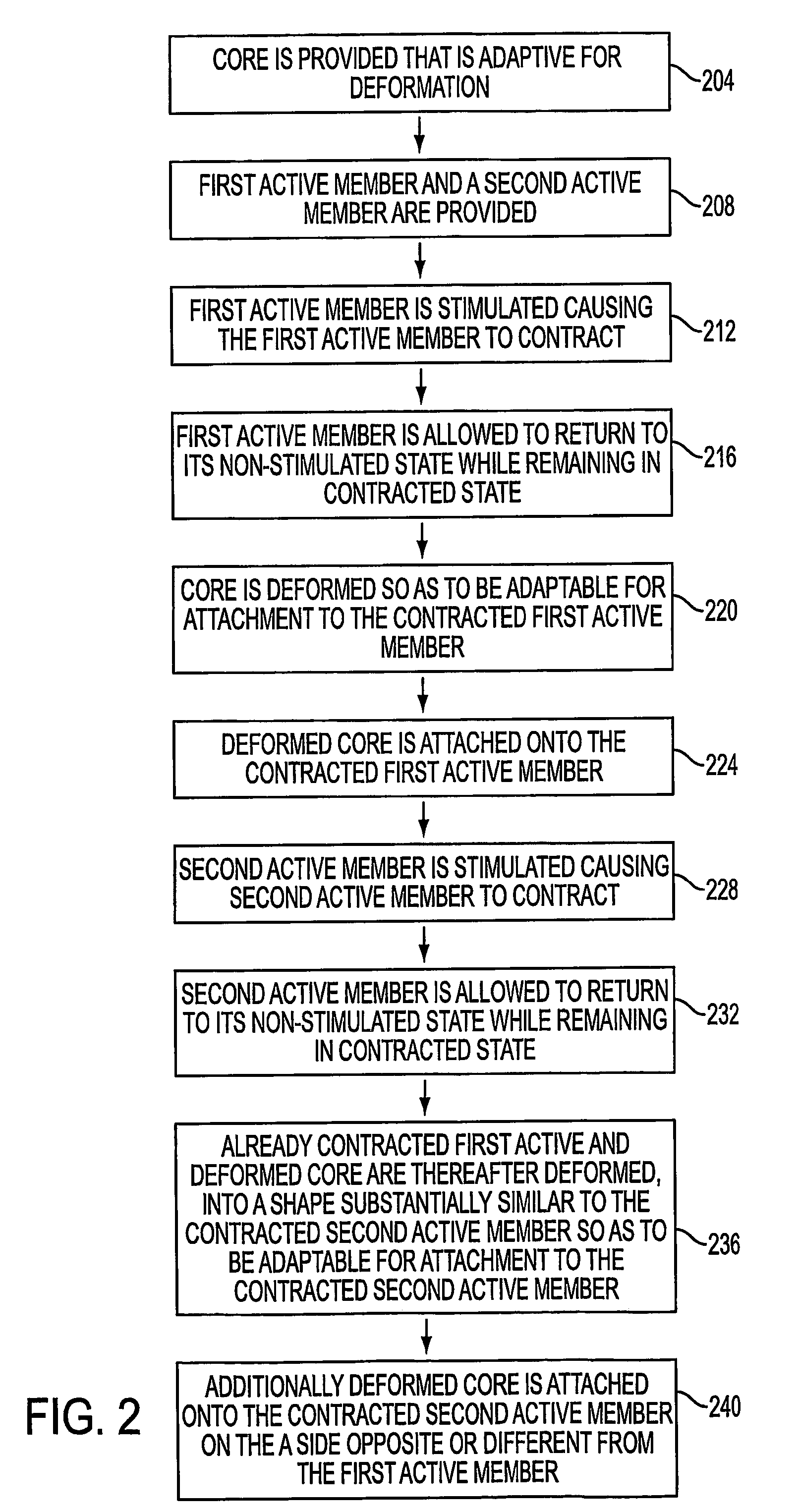Reversible shape memory multifunctional structural designs and method of using and making the same
a multi-functional, flexural technology, applied in the direction of machines/engines, non-electric welding apparatus, metal-working apparatus, etc., can solve the problems of more problematic efforts to achieve the effect of smas, clear undesirable, and limited two-way effect, and achieve the effect of optimizing the design of flexural actuators, low manufacturing cost, and high actuation frequency
- Summary
- Abstract
- Description
- Claims
- Application Information
AI Technical Summary
Benefits of technology
Problems solved by technology
Method used
Image
Examples
Embodiment Construction
[0101]Referring to FIG. 1, FIG. 1 illustrates an embodiment of the present invention method for manufacturing the reversible shape memory multifunctional structure. Although these steps are illustrated in a particular order in the flowchart of FIG. 1, the steps may be performed in various orders and / or with modified procedures or structures suitable to a given application. In step 105, a core is provided that is adaptive for deformation. In step 110, a first active member and a second active member are provided. In step 115, a first and second active members are stimulated by first and second stimulators, respectively. In step 120, the first and second active members are allowed to return to their non-stimulated states. In step 125, the first active member and second active members are pre-stretched. In step 130, the first and second active members are attached on opposite or different sides of the core. In step 135, the first active member is stimulated by first stimulator causing ...
PUM
| Property | Measurement | Unit |
|---|---|---|
| temperature | aaaaa | aaaaa |
| temperature | aaaaa | aaaaa |
| temperature | aaaaa | aaaaa |
Abstract
Description
Claims
Application Information
 Login to View More
Login to View More - R&D
- Intellectual Property
- Life Sciences
- Materials
- Tech Scout
- Unparalleled Data Quality
- Higher Quality Content
- 60% Fewer Hallucinations
Browse by: Latest US Patents, China's latest patents, Technical Efficacy Thesaurus, Application Domain, Technology Topic, Popular Technical Reports.
© 2025 PatSnap. All rights reserved.Legal|Privacy policy|Modern Slavery Act Transparency Statement|Sitemap|About US| Contact US: help@patsnap.com



